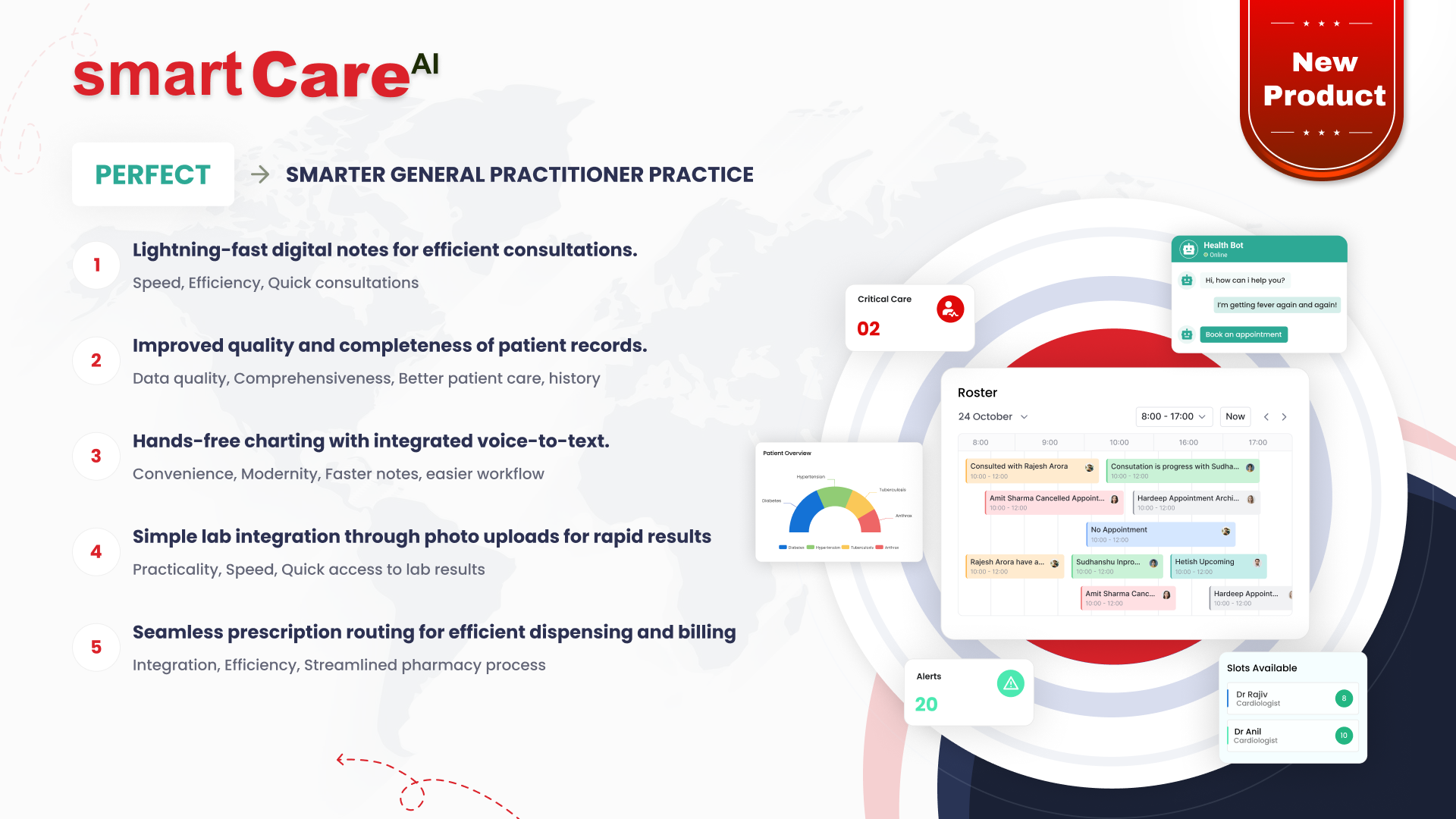
Posted On June 3, 2025
What Is the Agile Methodology in Healthcare Software Development?
The healthcare industry is undergoing rapid transformation, especially with the growing need for reliable, secure, and efficient digital solutions. In this landscape, Agile methodology has emerged as a valuable framework for developing healthcare software that is adaptable, patient-centred, and aligned with regulatory demands. But what does Agile really mean in a healthcare context—and how does it benefit both providers and patients?
What Does Agile Mean in Healthcare Software Development?
Agile is a project management and software development approach focused on collaboration, adaptability, and continuous improvement. Instead of delivering a final product at the end of a long development cycle, Agile breaks down work into smaller increments called “sprints.” Each sprint typically lasts 2 to 4 weeks and results in a usable version of the product.
In healthcare, this means that new software—whether for patient records, diagnostics, or telehealth—can evolve over time with frequent input from doctors, nurses, IT staff, and even patients.
How Agile Supports Faster and Flexible Development
One of the biggest strengths of Agile is its flexibility. In the healthcare sector, where guidelines and needs often change, traditional development methods can struggle to keep up. Agile allows teams to respond quickly to feedback or regulatory shifts without starting over.
By delivering small, functional updates regularly, healthcare organisations can begin using parts of the system while the rest is still being developed—resulting in faster time to value and better return on investment.
Key Principles of Agile in Healthcare Projects
Agile in healthcare software is guided by a few core principles:
-
People over processes: Collaboration between clinicians, developers, and stakeholders is essential.
-
Working software over extensive documentation: Functionality is prioritised, though compliance is still carefully maintained.
-
Customer collaboration over contract negotiation: Stakeholders stay involved throughout the development process.
-
Responding to change over following a plan: The system can adapt to new needs, policies, or technologies.
These values help ensure that the software remains relevant and truly supports healthcare operations.
Why Agile Helps Improve Patient-Centred Solutions
Patient care is at the heart of healthcare software. Agile allows developers to gather continuous feedback from end users—including clinicians and patients—at every stage. This ongoing input helps fine-tune the features and user experience, leading to more intuitive, effective, and personalised tools.
For example, if clinicians find that a dashboard isn’t providing the insights they need, Agile enables developers to tweak the design without waiting for the next major release.
Breaking Down Agile:Sprints, Feedback, and Teamwork
Agile relies on short development cycles called sprints. At the end of each sprint, a usable portion of the software is reviewed by the team, and feedback is incorporated into the next cycle. This feedback loop ensures constant alignment with goals and requirements.
Teamwork is crucial in Agile. Developers, testers, designers, and healthcare professionals work side by side, solving problems in real time and staying focused on delivering practical results.
The Role of Cross-Functional Teams in Agile Healthcare Projects
Agile thrives on collaboration—and in healthcare, this means involving more than just developers. Cross-functional teams usually include clinicians, administrators, UX designers, testers, and developers. Each team member brings a unique perspective, which helps shape software that truly meets end-user needs.
By engaging a wide range of expertise early and consistently, Agile helps reduce the risk of misalignment between the software and the actual workflows of healthcare providers.
How Agile Reduces Risks in Medical Software Development
Regulatory requirements, patient data security, and interoperability are just a few areas where traditional development can run into roadblocks. Agile methodology addresses these risks by delivering working software in smaller chunks or “iterations.”
This step-by-step approach allows teams to identify compliance issues or usability problems early, rather than discovering them at the end of a lengthy development cycle. As a result, Agile makes it easier to pivot and solve problems before they become costly.
Real-Time Adjustments:Agile’s Benefit for Evolving Requirements
Healthcare is not static—new regulations, emerging technologies, and changing patient needs mean software must evolve quickly. Agile supports this by embracing change, even late in the development process.
Teams can adjust project priorities based on real-time feedback from users or updates in healthcare standards. This flexibility ensures that the final product is relevant, effective, and aligned with current demands.
Challenges of Using Agile in Healthcare and How to Overcome Them
Despite its benefits, Agile isn’t without its hurdles in healthcare. Regulatory documentation, strict compliance protocols, and resistance to change within large organisations can slow Agile adoption.
However, these challenges can be addressed by tailoring Agile practices. For example, using hybrid models that combine Agile with traditional compliance checks or dedicating specific sprint cycles to regulatory review can help. Regular training and communication also ensure smoother transitions and better team alignment.
Is Agile the Right Fit for Your Healthcare Software Needs?
Agile isn’t a one-size-fits-all solution, but it offers strong advantages for healthcare providers and organisations aiming for innovation with low risk. If your goals include faster time to market, better user engagement, and continuous improvement, Agile is likely a strong match.
Evaluating your team’s readiness, stakeholder involvement, and project complexity will help you decide whether Agile—or a tailored version of it—is the best fit for your software needs.
Conclusion
The Agile methodology offers a practical, flexible, and collaborative framework that aligns well with the unique demands of healthcare software development. It empowers teams to adapt to change, work closely with users, and deliver high-quality solutions that improve patient outcomes and operational efficiency.
At smart Data Inc, we help healthcare organisations adopt Agile methods to create innovative, compliant, and user-focused software solutions. Whether you’re starting fresh or improving an existing system, embracing Agile could be your first step toward smarter healthcare delivery.
